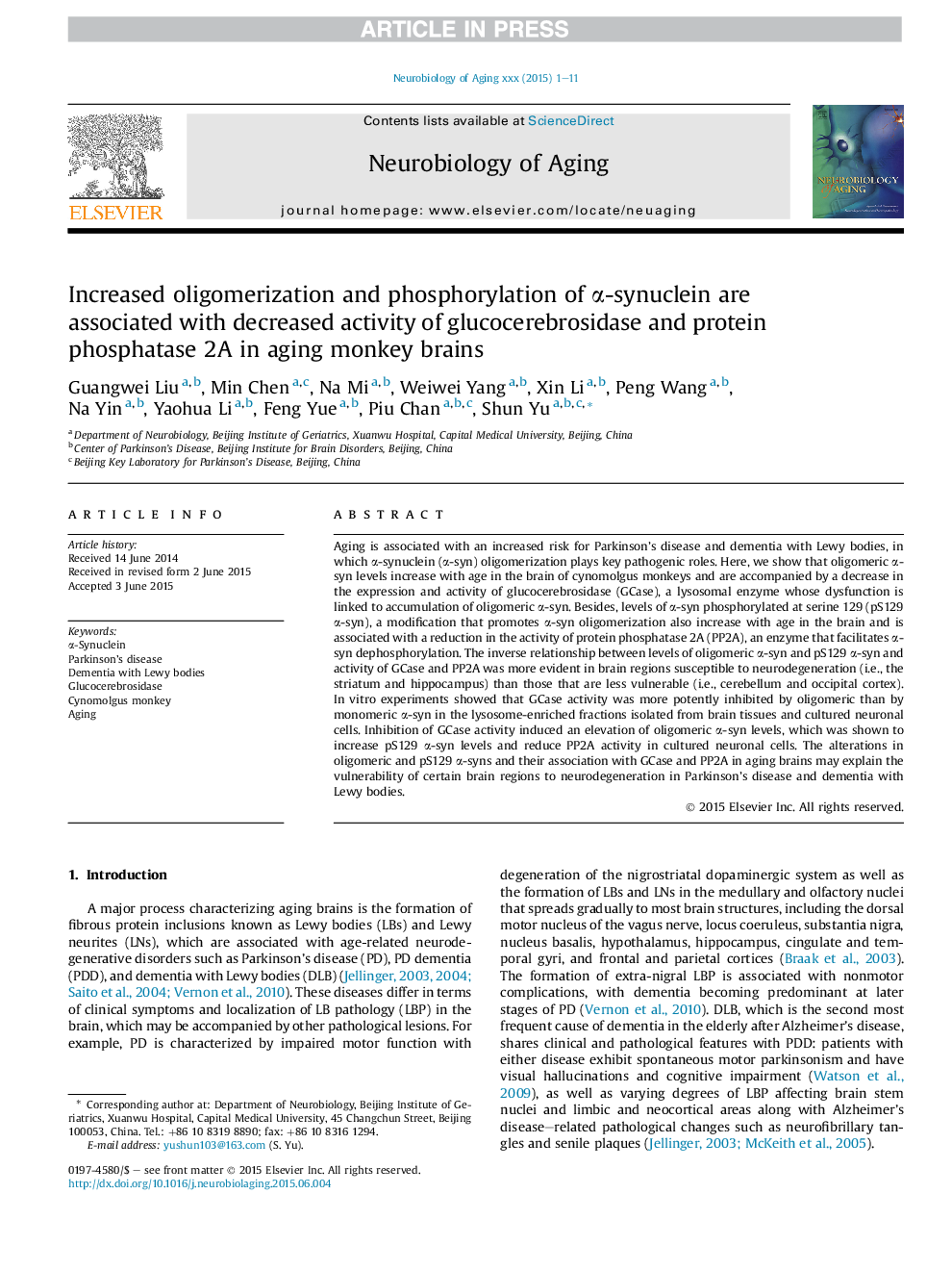| Article ID | Journal | Published Year | Pages | File Type |
|---|---|---|---|---|
| 6804000 | Neurobiology of Aging | 2015 | 11 Pages |
Abstract
Aging is associated with an increased risk for Parkinson's disease and dementia with Lewy bodies, in which α-synuclein (α-syn) oligomerization plays key pathogenic roles. Here, we show that oligomeric α-syn levels increase with age in the brain of cynomolgus monkeys and are accompanied by a decrease in the expression and activity of glucocerebrosidase (GCase), a lysosomal enzyme whose dysfunction is linked to accumulation of oligomeric α-syn. Besides, levels of α-syn phosphorylated at serine 129 (pS129 α-syn), a modification that promotes α-syn oligomerization also increase with age in the brain and is associated with a reduction in the activity of protein phosphatase 2A (PP2A), an enzyme that facilitates α-syn dephosphorylation. The inverse relationship between levels of oligomeric α-syn and pS129 α-syn and activity of GCase and PP2A was more evident in brain regions susceptible to neurodegeneration (i.e., the striatum and hippocampus) than those that are less vulnerable (i.e., cerebellum and occipital cortex). In vitro experiments showed that GCase activity was more potently inhibited by oligomeric than by monomeric α-syn in the lysosome-enriched fractions isolated from brain tissues and cultured neuronal cells. Inhibition of GCase activity induced an elevation of oligomeric α-syn levels, which was shown to increase pS129 α-syn levels and reduce PP2A activity in cultured neuronal cells. The alterations in oligomeric and pS129 α-syns and their association with GCase and PP2A in aging brains may explain the vulnerability of certain brain regions to neurodegeneration in Parkinson's disease and dementia with Lewy bodies.
Keywords
Related Topics
Life Sciences
Biochemistry, Genetics and Molecular Biology
Ageing
Authors
Guangwei Liu, Min Chen, Na Mi, Weiwei Yang, Xin Li, Peng Wang, Na Yin, Yaohua Li, Feng Yue, Piu Chan, Shun Yu,
